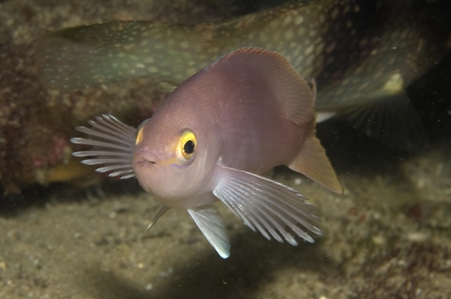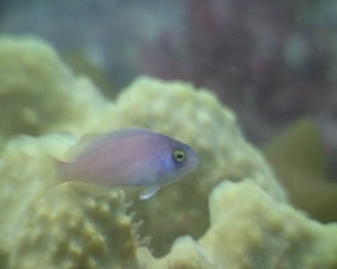General Description
Body slender, compressed; pectoral fins elongate; dorsal fin long-based; tail forked. Males and females are sexually dimorphic. Males bluish above, yellowish on sides with a distinct vertical black bar above anal-fin spines. Females pinkish with a blue line below the eye; small juveniles pink with a dark mauve head. To a length of 26 cm.
Biology
These fishes form large schools on sheltered coastal reefs, feeding on plankton above rocky reefs, outcrops and drop offs. They are usually found at shallower depths and in more sheltered habitats than Butterfly Perch.
Habitat
Above rocky reefs, outcrops and drop offs, in depths of 7-100 m.
Reefs
Open water
Distribution guide
New Zealand and southern Australia.
Species Group
Fishes › Seaperches and allies
Depth
Shallow (1-30 m)
Deep ( > 30 m)
Water Column
Max Size
26 cm
Diet
Omnivore
Commercial Species
No
Global Dispersal
Recorded in Australia
Identify
Conservation Status
- DSE Advisory List : Not listed
- EPBC Act 1999 : Not listed
- IUCN Red List : Not listed










